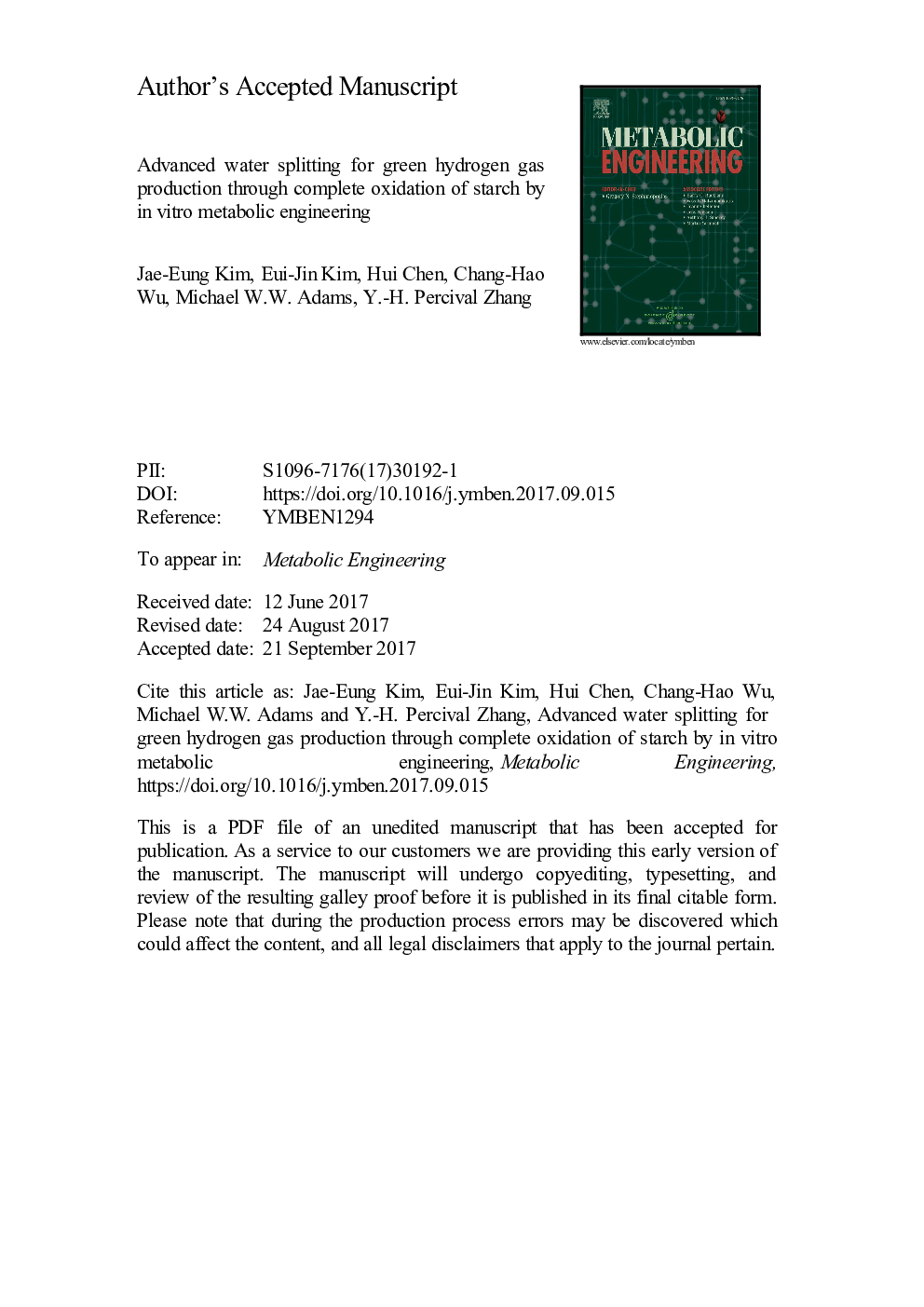| Article ID | Journal | Published Year | Pages | File Type |
|---|---|---|---|---|
| 6494154 | Metabolic Engineering | 2017 | 32 Pages |
Abstract
Starch is a natural energy storage compound and is hypothesized to be a high-energy density chemical compound or solar fuel. In contrast to industrial hydrolysis of starch to glucose, an alternative ATP-free phosphorylation of starch was designed to generate cost-effective glucose 6-phosphate by using five thermophilic enzymes (i.e., isoamylase, alpha-glucan phosphorylase, 4-α-glucanotransferase, phosphoglucomutase, and polyphosphate glucokinase). This enzymatic phosphorolysis is energetically advantageous because the energy of α-1,4-glycosidic bonds among anhydroglucose units is conserved in the form of phosphorylated glucose. Furthermore, we demonstrated an in vitro 17-thermophilic enzyme pathway that can convert all glucose units of starch, regardless of branched and linear contents, with water to hydrogen at a theoretic yield (i.e., 12 H2 per glucose), three times of the theoretical yield from dark microbial fermentation. The use of a biomimetic electron transport chain enabled to achieve a maximum volumetric productivity of 90.2 mmol of H2/L/h at 20 g/L starch. The complete oxidation of starch to hydrogen by this in vitro synthetic (enzymatic) biosystem suggests that starch as a natural solar fuel becomes a high-density hydrogen storage compound with a gravimetric density of more than 14% H2-based mass and an electricity density of more than 3000 W h/kg of starch.
Keywords
Related Topics
Physical Sciences and Engineering
Chemical Engineering
Bioengineering
Authors
Jae-Eung Kim, Eui-Jin Kim, Hui Chen, Chang-Hao Wu, Michael W.W. Adams, Y.-H. Percival Zhang,
